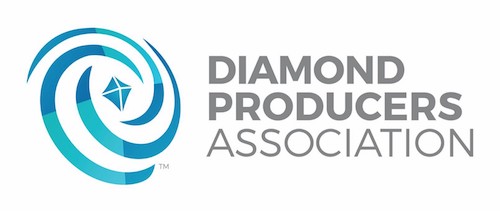Articles and News
DPA Responds To FTC Guides’ Updated Terminology | August 01, 2018 (2 comments)

New York, NY—Not surprisingly, diamond industry leaders are somewhat less than thrilled with the final version of the updated FTC Jewelry Guides. Meanwhile, lab-grown diamond producers are celebrating the revised Guides as somewhat of a victory for their product, especially the removal of the word “natural” from the definition of a diamond. The FTC’s new definition is “a diamond is a mineral consisting essentially of pure carbon crystallized in the isometric system.”
Related: Revised FTC Guidelines Remove “Natural” From Definition Of “Diamond”
“We are thrilled that the FTC has officially acknowledged what we have already have known, that created diamonds are real diamonds and the incredible technology that we have invested in has truly been a part of our commitment to offering the consumer a flawless, real diamond,” said Amish Shah, president of ALTR Created Diamonds, a lab-grown diamond manufacturer and division of R.A. Riam Group. “As consumers nowadays increasingly demand transparency and clarification on the products they buy and wear, we couldn’t be more pleased with this ruling.”
The removal of the word “natural” was based purely on science, not commerce. The FTC’s justification for the change is that man-made diamonds did not exist in 1956 when the first definition was drafted, but now that lab-grown diamonds have the same physical, chemical, and optical properties as diamonds found in the earth, they are in fact diamonds.
Diamond industry leaders fear that consumers won’t differentiate between the two. In a statement, Jean-Marc Lieberherr (above left), CEO of the Diamond Producers Association, expressed grave concerns around the new terminology, especially use of the word “cultured” to describe a diamond even with additional qualifiers, and use of the word “mined” to describe a natural diamond, especially as not all are obtained through extractive mining. But he acknowledged the synthetic diamond manufacturers’ pledge to respect the new Guides in their marketing and called upon them to honor the commitment.
Here is Lieberherr’s complete statement regarding the new Guides:
“The DPA welcomes the release of the new Federal Trade Commission (FTC) Jewelry Guides following six years of consultation with the industry. This document plays an important role, alongside other applicable norms and standards, in protecting consumers from deceitful communication by marketers. The DPA commits to respecting the FTC Guides – as it has always done – in its communication, and in particular as it pertains to the way it describes synthetic diamonds – diamonds created in a laboratory – and natural diamonds. We note and welcome synthetic diamond manufacturers’ public pledge to respect the new Guides.
The DPA appreciates that the FTC still requires marketers of man-made stones to differentiate their product conspicuously from natural diamonds in their marketing communication. While we disagree with the change in the FTC’s definition of a diamond, we want to remind the industry that all other norms and standards continue to support that a diamond is a mineral of natural origin, and to clarify that the FTC Guides continue to ask marketers to qualify the use of the word “diamond” to describe any product that is not “a mined stone.”
Furthermore, the DPA expresses deep concerns that the new Guides fail to provide the clarity required to avoid more consumer confusion and deception, instead introducing unnecessary ambiguity. In particular, the Guides support the broad use of terms which – while potentially incorrect and misleading – can be qualified through communication to avoid consumer deception. This is the basis on which the FTC approves the qualified use of the term “cultured diamonds” even though it has been demonstrated that the majority of consumers mistakenly interpret “cultured” as a description used for natural diamonds. The DPA believes that this principle, if widely applied, would open the door to yet more consumer confusion and deception and would require the agency to address a large number of claims on a cumbersome case-by-case basis. DPA had hoped that the agency would provide clearer guidelines for industry on these important issues and looks forward to engaging further the FTC on the subject.
Finally, the DPA is surprised at the wide use of the expression “mined diamond” throughout the FTC Guides in lieu of “natural diamond”, a terminology heavily promoted by man-made diamond producers. Indeed, “mined diamonds” refers to an extraction process, and not to a creation process, and the vast majority of the world’s diamonds will never be mined, making this an incorrect qualification.”
For more details on the DPA’s reaction to the new FTC Guides, please click here.








